Cable trenches construction probably doesn’t looks like the most exciting things in life, but including for them there are things that is better to know to avoid mistakes.
They are used to connect the WTGs together with medium voltage cables, and they bring the earth and the optical fibres cables as well.
The standard construction sequence is as it follows:
After the opening of the trench, on the bottom a layer of sand 10 cm thick is spread, placing above it the medium voltage cables, the ground cable and the optical fiber cable.
Subsequent to the positioning of the cables another layer 30 cm thick of fine sand, washed and compacted properly, is extended.
Above this second layer it will be placed, throughout the entire length of the trench, a HDPE cover tile marking the presence of underground cables.
The cover tiles will be placed directly above the filling that covers the cables. It has a function of mechanical protection of the cables, signaling the proximity of the cables in case of reopening of the trench.
On this tape will be extended another layer 50 cm thick, using native material coming from the excavations free of stones, branches and roots, properly compacted in layers of no more that 20 cm in thickness of loose material before compaction.
After completing this layer it will be positioned a PVC warning tape informing of the existence of medium voltage electrical cables under it.
Finally, the backfilling of the trench will be completed with a layer of 30 cm using material coming from the excavations, free of stones, branches and roots, compacted properly. The last layer of backfill will be done with topsoil coming from the excavation and previously stored properly, in order to recover the natural environment of the area as soon as possible.
In the following pictures the main elements of the operation are shown.
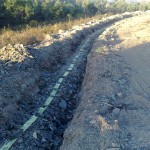
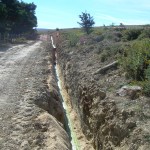
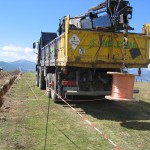
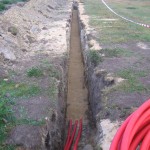
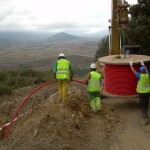
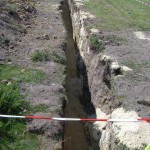
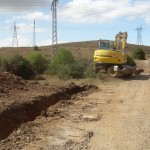
Leave a Reply